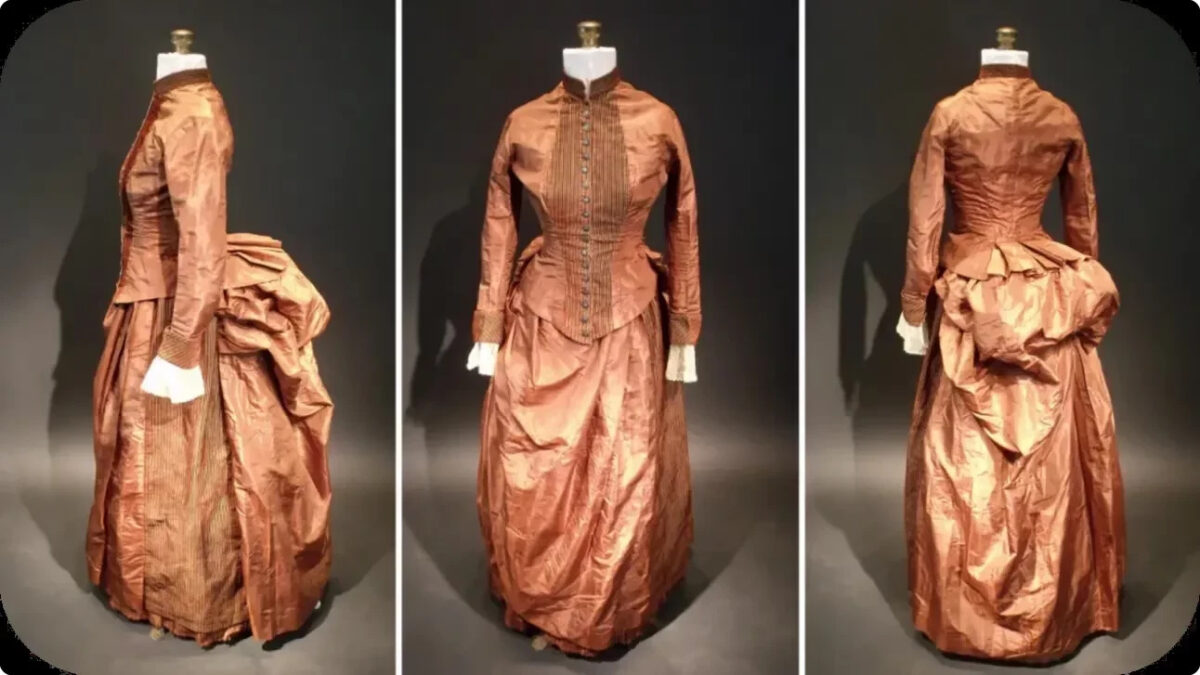“Secret Code” Found Hidden in 1800s Dress

In an antique mall in Maine, Sara Rivers Cofield, a collector of vintage costumes and an archaeologist, discovered a Victorian dress from the 1880s. Despite its age, the dress’s intricate details and condition were remarkably preserved. The dress featured a secret pocket under its bustle, hiding two sheets of paper filled with a list of words and locations that seemed nonsensical or perhaps coded.
Rivers Cofield, intrigued by this find, sought to understand the purpose of these hidden messages and their significance to the owner, Bennett, who’s name was found hand written on a tag inside the dress.
The code found within the Victorian dress’s hidden pocket consisted of a series of words and locations that, at first glance, appeared to be a random assortment. The cryptic list included terms such as “Bismark, omit, leafage, buck, bank” and another sequence mentioning “Calgary, Cuba, unguard, confute, duck, Fagan.” These sequences, coupled with marginal notes suggesting temporal elements, puzzled Sara Rivers Cofield and sparked widespread curiosity.

In 2014, Rivers Cofield shared her discovery on a blog, hoping to attract someone capable of deciphering the cryptic notes. The mystery captivated online sleuths, though no conclusive answers were found. Speculation ranged from espionage to secret communications, but none fit the context of the dress’s era accurately.
The breakthrough came when Wayne Chan, a Canadian researcher, took an interest in the puzzle. Chan, experienced in solving codes, investigated extensively but initially found no solution. It wasn’t until years later, when he was exploring weather codes from the telegraph era that he identified the messages as weather reports. These reports were not encrypted for secrecy but rather condensed for economical telegraph transmission. Each word represented specific meteorological data, such as temperature, wind speed, and barometric pressure, relevant to a particular location and time.
For instance, the line “Bismark, omit, leafage, buck, bank” held detailed meteorological information:
“Bismark” indicated the location of the weather station, in this case, Bismarck, North Dakota.
“Omit” translated to an air temperature of 56 degrees Fahrenheit and a barometric pressure of 0.08 inches of mercury.
“Leafage” denoted a dew point of 32 degrees Fahrenheit observed at 10 p.m.
“Buck” signified the absence of precipitation.
“Bank” represented a wind velocity of 12 miles per hour and a clear sunset.
Chan’s research revealed that the coded messages followed a 19th-century telegraphic weather code used by the Army Signal Corps, the national weather service of the United States at the time. This discovery highlighted the practical use of telegraphic codes for cost-saving purposes in transmitting detailed weather information.
The complexity of the code, despite its non-secretive nature, shows the ingenuity of communication strategies in the telegraph era before they had all of our fancy cell phones.